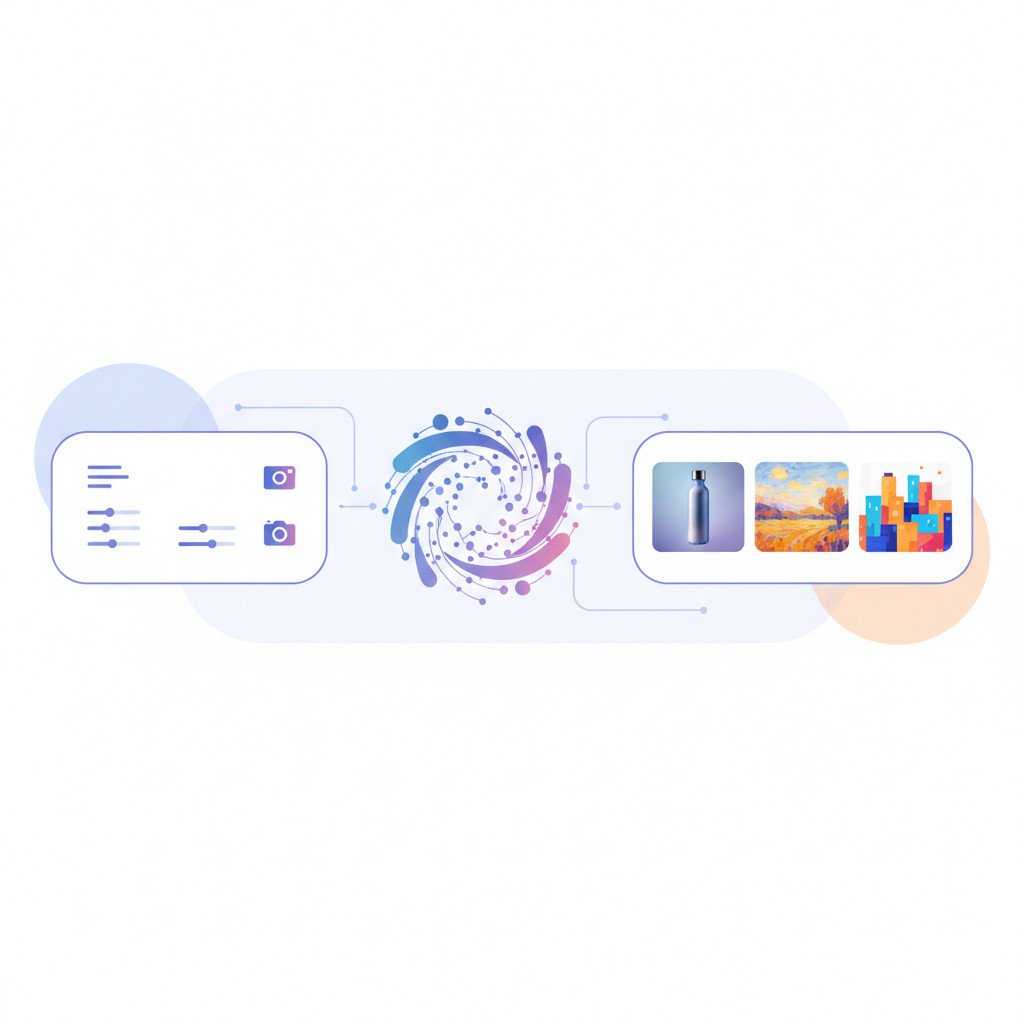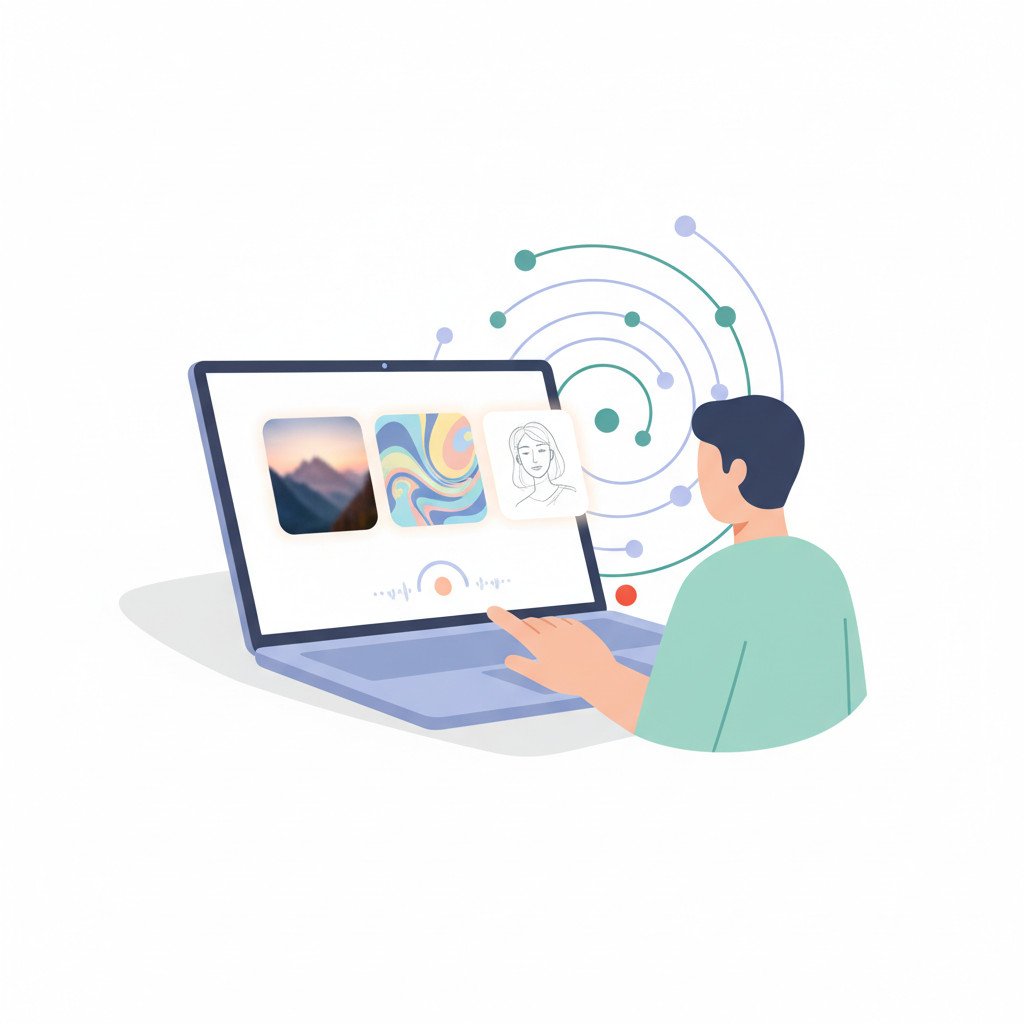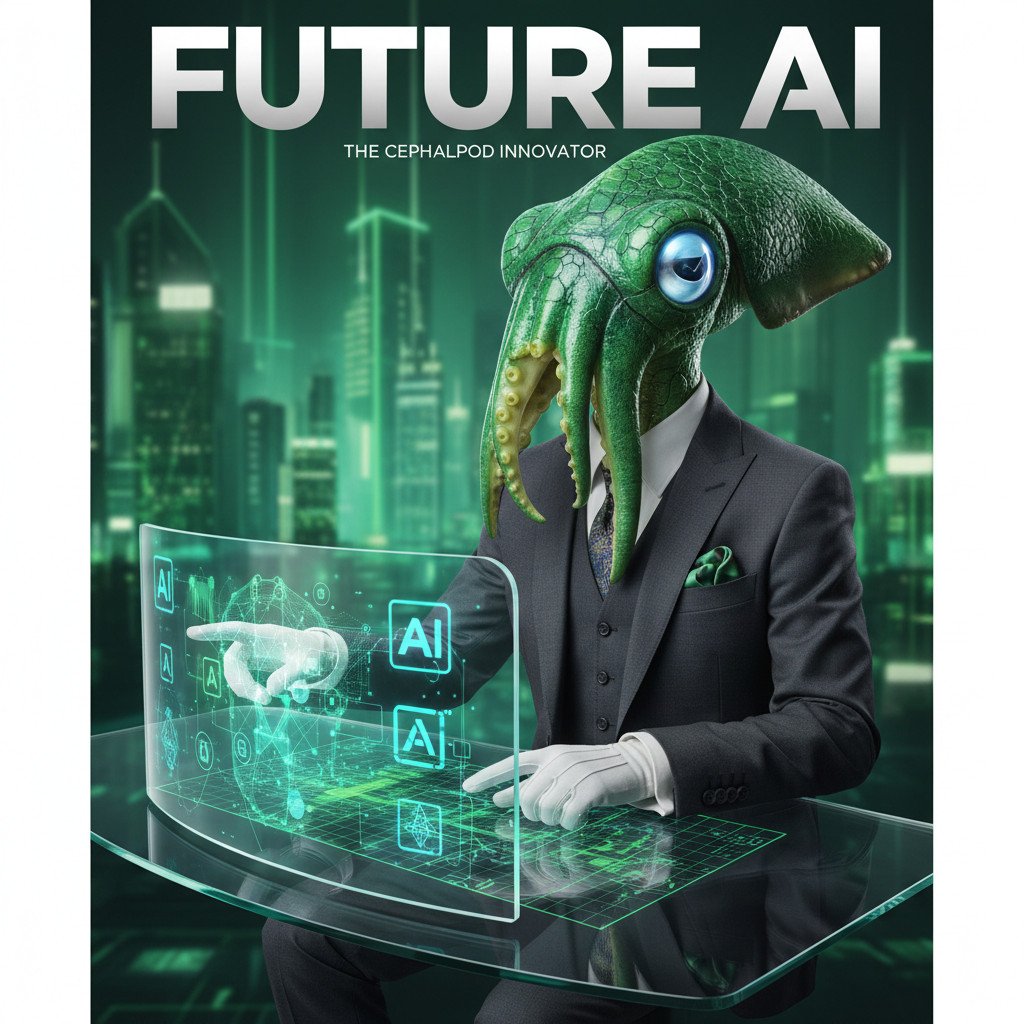The best AI image generators are reshaping how creators, marketers, and businesses produce visuals. In recent years their realism and speed have improved dramatically, and demand has exploded. Because of that, teams now generate brand art, concept sketches, and social assets within minutes. However, not every tool fits every use case, and costs, quality, and licensing vary widely.
Therefore, this guide compares twenty plus platforms, highlights practical use cases, and offers selection tips. You will find notes on pricing, commercial rights, and integration with Photoshop and design workflows. As a result, you can choose generators that balance creativity, speed, and legal safety.
Read on to learn practical tips for prompt writing, version control, and ethical considerations. We also review newer entrants like Nano Banana, Qwen Image, and Ideogram. However, we remain cautious about copyright, data provenance, and the public exposure of images. By the end you will know which platform suits your budget and project goals.
What Are the best AI image generators?
AI image generators are software systems that create images from text prompts, sketches, or example photos. They use machine learning models to translate instructions into pixels. For example, diffusion models iteratively refine noise into images. Meanwhile, earlier systems used generative adversarial networks (GANs) to learn realistic images. You can read more about GANs on Wikipedia for technical background. As a result, creators get a fast way to prototype visual ideas.
How they work
- Models learn from large image datasets and captions. Therefore, they map language to visual patterns.
- Diffusion models start with random noise and denoise toward an image. This method powers many modern tools.
- Transformer architectures help the model understand complex prompts and composition.
- Tools often include style controls, upscalers, and inpainting features for editing.
Examples include Stable Diffusion, DALL-E style systems, GPT-4o image features, Midjourney, Adobe Firefly, Ideogram, Nano Banana, and Leonardo.Ai. Many platforms offer API access and Photoshop plugins. For instance, Adobe Firefly integrates with Adobe apps and offers generative credits: Adobe Firefly.
Why the best AI image generators matter for creators and businesses
- Speed and scale: Teams generate dozens of concepts in minutes. Therefore, production timelines shrink.
- Cost efficiency: Freelance or stock image costs fall because you can iterate in-house.
- Creative expansion: Artists explore new styles and combine concepts quickly.
- Personalization: Marketers create tailored visuals for segmented audiences.
- Prototyping and ideation: Product teams visualize concepts before expensive shoots.
Practical examples
- Marketing teams produce social assets and A/B test visuals across campaigns. For integration tips, see how AI images fit into web builds: Integration Tips.
- Designers use inpainting to update product photos without reshoots. As a result, time to market improves.
- Indie game developers generate concept art and environment mockups rapidly.
Because licensing and provenance matter, evaluate commercial rights carefully. For a deep comparison of options and budgets, consult our full guide: Full Guide.
Related search terms include AI image generators, Midjourney, Stable Diffusion, DALL-E, GPT-4o, Nano Banana, Ideogram, Adobe Firefly, and Leonardo.Ai. However, choose tools that match your quality needs, budget, and legal constraints.

Comparison table: best AI image generators (at-a-glance)
This table compares top generators by price, features, usability, and output quality. Use it to pick tools for marketing, design, or prototyping. Therefore, you can match capabilities to your workflow and budget.
| Generator | Starting price (noted plan) | Key features | Ease of use (1–5) | Output quality (1–5) | Unique capabilities | Commercial license notes |
|---|---|---|---|---|---|---|
| GPT-4o (ChatGPT Plus) | $20/month (ChatGPT Plus) | Conversational text to image; iterative prompts; image edits | 5 | 4 | Chat-driven image creation and rapid iteration | Included with ChatGPT Plus; review OpenAI license terms |
| Midjourney | From $10/month (Basic) | Stylized high-quality image generation; strong community prompts | 3 | 5 | Distinctive artistic styles and community feed | Commercial rights included; images public by default unless private plan |
| Adobe Firefly | From $9.99/month (2,000 credits) | Photoshop/Creative Cloud integration; generative edits and inpainting | 4 | 5 | Tight Adobe app integrations and design assets | Offers commercial use; check Firefly terms for asset reuse |
| Nano Banana (Google) | Included with Google AI Pro $20/mo | Fast prototyping; Google ecosystem access | 4 | 4 | Deep Google product integration and prompt tooling | Limited free availability; review Google AI Pro terms |
| Ideogram | Free tier; from $8/month for full res | Text-to-image focused on characters and layouts | 4 | 4 | Strong character and layout generation | Full-resolution downloads and priority credits on paid plans |
| Stable Diffusion (open models) | Free self-host or paid hosted plans | Highly customizable, model fine-tuning, many UIs | 3 | 4 | Local control, community checkpoints, plugin ecosystem | License varies by model and checkpoint; check model terms |
| Leonardo.Ai | Free tier; paid tiers vary | Designer-friendly UI; strong concept art outputs | 4 | 5 | Rapid concept art generation and style presets | Licensing depends on plan; read platform terms |
| Recraft | Free 30 credits/day; Basic $12/month | Photo editing, upscaling, inpainting | 5 | 4 | Daily free credits and focus on practical edits | Paid plans boost credit limits for commercial use |
| Reve | Free plan; Pro $20/month | Private images, batch generations, API access | 4 | 4 | Private workspace and developer-friendly APIs | Pro adds privacy controls and more generations |
| FLUX | Varies; many platforms offer free credits | Inpainting, style transfer, pipeline integrations | 4 | 3 | Flexible integrations with existing design tools | Pricing differs by host; check platform terms |
Quick selection tips
- If you need polished, artistic outputs, choose Midjourney or Leonardo.Ai. Therefore, expect strong stylized results.
- If you want integrated workflows, choose Adobe Firefly or GPT-4o for chat-led iteration.
- If you value control and customization, choose Stable Diffusion or hosted variants. However, you must manage models and licensing.
Related keywords for search and comparison include AI image generators, Midjourney, Stable Diffusion, DALL-E, GPT-4o, Nano Banana, Ideogram, Adobe Firefly, and Leonardo.Ai.
Use cases for the best AI image generators
AI image generators power many real-world tasks across business and creative work. Therefore, teams save time while exploring more visual ideas. Below are practical use cases and the benefits each delivers.
Marketing and social media
- Rapid campaign creatives: Marketers generate multiple ad variations in minutes. As a result, teams run faster A/B tests and improve conversion rates.
- Localized visuals: Create region-specific imagery without expensive photoshoots. For example, a brand can swap backgrounds or cultural elements in seconds.
Content creation and publishing
- Blog and article art: Writers generate header images and illustrations on demand. This reduces dependency on stock photos and speeds publishing.
- Thumbnail and cover design: Creators iterate variants to boost click-through rates with less cost.
Product design and e-commerce
- Product mockups: Designers visualize colorways, materials, and packaging quickly. Therefore, teams avoid costly prototypes early on.
- On-demand lifestyle shots: E-commerce sites produce lifestyle images without complex shoots.
Design and creative workflows
- Concept art and mood boards: Artists explore styles and compositions rapidly. For instance, game studios produce environment concepts within hours.
- Inpainting and retouching: Designers update product images without reshoots, which saves time and money.
Prototyping and UX
- Rapid UI mockups: Product teams generate hero images and illustrations for mockups. As a result, stakeholder feedback cycles shorten.
Education and training
- Visual aids and scenarios: Educators create custom diagrams and historical reconstructions cheaply. Therefore, lessons become more engaging.
Developer and API use
- Automated content pipelines: Developers integrate generators via APIs to auto-create imagery for apps. For integration examples, see how AI images fit into web builds: AI-driven website generation.
Key benefits summarized
- Efficiency: Generate dozens of concepts quickly, which lowers time to market.
- Creativity boost: Explore unusual styles and combinations you might not test manually.
- Cost effectiveness: Reduce reliance on expensive shoots and licensing fees.
For a deeper comparison and budget guidance, consult our full guide on the topic: best AI image generators 2026.
Related keywords and tools: generative AI, AI image generators, Midjourney, Stable Diffusion, DALL-E, GPT-4o, Nano Banana, Ideogram, Adobe Firefly.

Challenges and limitations of the best AI image generators
AI image tools offer power but also face real constraints. Teams should weigh risks alongside benefits. Below are core challenges and brief impacts.
Bias and representation
Models reflect biased training data and can misrepresent communities. Review outputs and test prompts across demographics to spot skewed results early.
Quality variability and unpredictability
Output depends on prompt, model, and seed. The same prompt may yield different artifacts or hallucinated details, so expect iteration and version control.
Copyright and licensing uncertainty
Training sets often include copyrighted images, leaving provenance unclear. Verify commercial rights and document permissions before publishing.
Ethical and reputational risks
Generative tools can produce deepfakes or misleading content. Misuse harms people and brands, so apply strict editorial standards.
Privacy and operational limits
Services may retain prompts and images; high volume use increases costs and requires asset management and retention policies.
Mitigation strategies
- Audit outputs for bias and accuracy by sampling generation batches, comparing results across demographic prompts, and flagging or removing problematic images before release.
- Track model provenance and licensing by recording model name, version, checkpoint, training date, and provider terms. Attach these records to each asset for audits and legal review.
- Require human oversight and a formal approval workflow that includes legal, brand, and diverse reviewers. Make final edits and signoffs mandatory for public or commercial use.
- Diversify prompts and reviewers to reduce cultural blind spots. Test multiple phrase variants, swap synonyms, and include external reviewers for high risk content.
- Control data exposure and costs by using private plans or self hosted models for sensitive projects, enable strict retention policies, and monitor credit usage and spend monthly.
Related keywords: model transparency, data provenance, prompt engineering, image licensing, generative AI governance.
Industry voices and adoption statistics for the best AI image generators
Generative image tools have surged into mainstream workflows. Therefore, expert commentary and hard numbers help explain why adoption has accelerated.
Key statistics
- 73% of U.S. marketers reported using generative AI in their companies, showing strong marketing uptake (Statista).
- Nearly all small businesses use at least one AI-enabled tool. As a result, 40% of them report using generative AI for tasks like image creation (AP News).
- Many enterprise teams report clear ROI from GenAI. Consequently, organizations prioritize investments in automation and creative tooling (industry surveys referenced by TechRadar and market reports).
Notable expert quotes
“I am very proud that we’ve made the best model in the world available for free in ChatGPT, without ads or anything like that.”
Sam Altman, CEO, OpenAI — reflecting on GPT-4o’s image capabilities and broad access. (source)
“AI will augment human ingenuity, not replace it.”
Shantanu Narayen, CEO, Adobe — emphasizing generative AI as a creative amplifier. (source)
“We’re excited to launch a tool that harnesses the power of generative AI to address our customers’ commercial needs while respecting the intellectual property of creators.”
Getty Images newsroom, on their commercially safe generative AI offering. (source)
Why this matters
- These quotes show leaders focus on accessibility, safety, and augmentation. Therefore, adoption favors tools that balance creativity with legal clarity.
- Meanwhile, statistics show rapid real‑world use in marketing and small business. As a result, teams increasingly rely on AI for visual content.
Use these sources to support procurement decisions and policy discussions. Additionally, always verify provider licensing before using generated images commercially.
Industry expert quotes and adoption statistics
Generative image models are moving from novelty to business staple. Therefore, we include recent statistics and industry voices to show adoption trends and practical outcomes.
Key statistics
- Statista reports broad marketing adoption of generative AI, noting a rapid increase in use across campaigns and creative teams. See Statista for market context and numbers.
- A U.S. Chamber of Commerce and Teneo survey, summarized by AP News, found nearly all small businesses use at least one AI-enabled tool. As a result, 40% now use generative AI for tasks such as image creation. See the full survey on AP News.
- Industry reports show many marketing teams report measurable ROI from GenAI. Consequently, organizations are increasing investment in automation and creative tooling. For further reading, see market analysis summarized by TechRadar.
Selected expert quotes
“I am very proud that we’ve made the best model in the world available for free in ChatGPT, without ads or anything like that.”
Sam Altman, CEO, OpenAI — on expanding access to GPT models and multimodal features. Read more.
“AI will augment human ingenuity, not replace it.”
Shantanu Narayen, CEO, Adobe — stressing augmentation and productivity benefits. Read more.
“We’re excited to launch a tool that harnesses the power of generative AI to address our customers’ commercial needs while respecting the intellectual property of creators.”
Getty Images newsroom — on commercially safe generative offerings. Read more.
Why this matters
- These data and quotes show rising trust and practical value in the best AI image generators. Therefore, procurement teams should weigh both capability and licensing.
- Meanwhile, pilot projects and small trials remain low-risk ways to validate ROI and policy needs before wide rollout.
Conclusion
AI image generators have changed how teams create visuals. They speed ideation, reduce costs, and expand creative possibilities. However, they also bring legal, ethical, and quality challenges. Therefore, choose tools that match your needs and governance requirements.
When selected carefully, the best AI image generators deliver measurable value. For example, marketing teams can run more A/B tests and improve campaign performance. Meanwhile, designers can prototype faster and hand off polished assets. As a result, teams shorten timelines and free budget for higher level work.
EMP0 helps businesses capture this value through practical AI and automation solutions. EMP0 builds integrations, automations, and workflows that scale creative operations. Moreover, EMP0 focuses on monetization and process improvements that multiply revenue. In short, EMP0 acts as a partner for technological growth and operational excellence.
Connect with EMP0 through these profiles and resources:
- Website: emp0.com
- Blog: articles.emp0.com
- Twitter X: @Emp0_com
- Medium: medium.com/@jharilela
- n8n: n8n.io/creators/jay-emp0
Start with a low risk pilot, measure outcomes, and expand proven workflows. Finally, keep human review in the loop and follow licensing rules. With the right policies and partners such as EMP0, teams can safely scale visual production and unlock new revenue streams.

